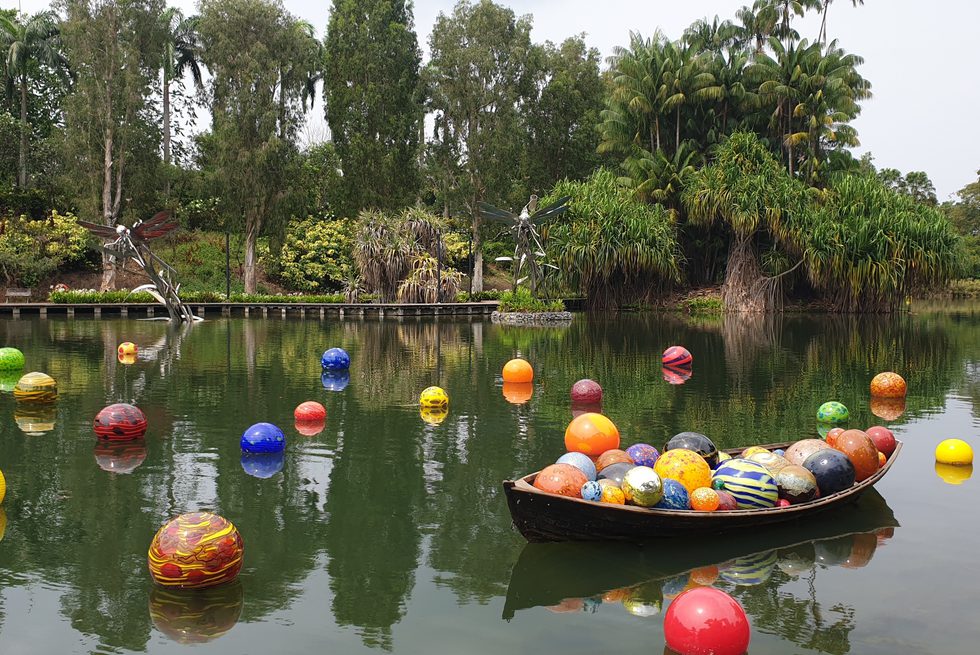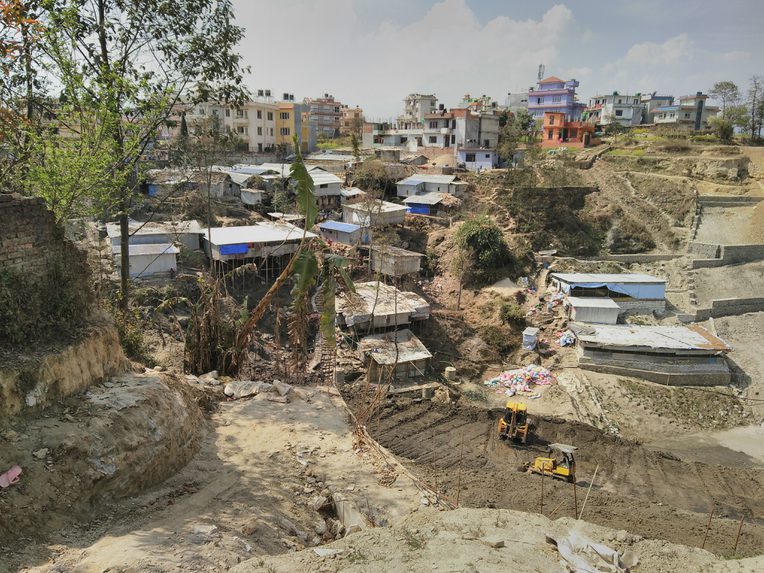“Remote” Ethnography during a Pandemic: Frictions and Challenges in Translating Intimacies
From the Series: A Collaboratory of Indian Ocean Ethnographies
From the Series: A Collaboratory of Indian Ocean Ethnographies

I had just settled in Nepal when the pandemic hit. Apart from doing interviews with the help of Tanka, a Nepali journalist, I had been regularly going to Rohingya settlements in Nepal to meet with Khadija. I had met Khadija upon my first visit to one of the settlements and was impressed by her story. We enjoyed talking to each other, and when Khadija told me that she had been a teacher herself and knew some English but forgot most of it over time, I offered to help her refresh her skills in English. Khadija immediately brightened up and agreed to meet three times a week. Whenever I entered her house we would go through some English lessons and, in spite of my protests, she would always make me some tea and prepare a snack before I left to walk back home. But from one day to the next, Khadija and I were cut off from each other. Despite low infection rates, the Nepalese government announced a strict lockdown on the 24th of March. I only lived a few minutes away from the Rohingya community, but the lockdown made it seem like miles away. I was torn between staying and leaving now that doing fieldwork had become futile. After six weeks in lockdown, I flew back to Germany.
Upon my return to Germany, I struggled with continuing fieldwork. I wondered: if ethnographic work is about intimacy (Funk and Thajib 2019), how can it be built and experienced through remote ethnography? Already the word “remote” appears antagonistic to intimacy. I came to understand that emotional closeness does not necessarily require physical proximity, and that I had to translate intimate relations offline to the online world. But these offline intimacies are not being easily translated as their (re)production online engages structural changes in communication (also read Lakshmi Pradeep, Moyukh Mahtab, and Carola E. Lorea et al.’s essays around affect, gender, and ICT in this series). Offline intimacy is built not only through the words we use but also through our intonation, body language, and a shared sensuous environment. These important aspects of communication can be replaced by sending emoticons, voice messages, or having video calls. But they possess other textualities and constitute different “languages” for expressing intimacies. They require constant, strenuous acts of collaborative interpretation, resulting in approximations and mistranslations. Rather than replicating previous intimacies, they instead produce new forms of rapport (Bassnett 2014). In the following paragraphs, I will take a look at the challenges, tensions, and frictions that can occur when translating gendered intimacies from the field—experienced as a shared sensuous environment—to online. I will show that intimacies experienced offline cannot be exactly reproduced online. Instead, the online field of interaction changes the dynamics of gendered intimacies and complicates their (re-)production through its specific language, privacy, and access settings.

Thinking about my relationship with Hasiah, another interlocutor who I had met in Thailand, I noticed that although translations of past intimacies led to new ones, their production was still based on a dialogue about our past interactions and shared history and future offline familiarity. Despite Hasiah’s and my online intimacy being new, it was not disconnected from our offline experiences. Hasiah’s husband had been the first Rohingya man I had been in contact with. Before Hasiah opened up to me, I had visited her house a few times to speak with her husband. Only after she noticed that I did not come to meet her husband only and regularly practiced English with her children by singing songs and playing games did she start talking to me. As a result, we grew increasingly closer to one another and at one point she told me: “You can come anytime, my home is yours as well.” After that moment, I regularly met with Hasiah until I had to leave Thailand. Now, separated from each other due to the pandemic, both of us still contact one another on Facebook, but our conversations always return to and conclude with her saying, “Please come again. We miss you,” to which I answer, “Soon, but not yet. Travelling is too difficult right now,” and “I miss you, too!” And then, our conversations usually meet their end, until one of us decides to repeat this dialogue—always drawing on memories of our past intimacy and imagining a return to it as soon as the pandemic is over.
Even though Hasiah and I developed a mutually agreed upon script for our new online relationship, translations of intimacy could equally end up in conflict due to their novelty. When I contacted Rafiq, Khadija’s eldest son, over Facebook, he engaged me in straightforward flirtation. Although Rafiq had been teasing and flirtatious before, the online space seemed to convey a sense of privacy to him that was previously impossible within the space of the settlement. This newly gained privacy online allowed him to “test” his charm further. Although such flirtatious and match-making bantering by Rohingya men and women was not new to me, and I did not think of Rafiq’s flirtations as threatening or harassing, they left me a bit uncomfortable in relation to my position as a researcher. I was not sure how much I could engage in such bantering before crossing an ethical boundary (Funk and Thajib 2019). The translation and expansion of our intimate relations online led to divergent views and scripts on how to (re-)build our intimacy and created frictions that left me wary of contacting him online.
The online world does not always guarantee more privacy as it did with Rafiq. Although Rohingya men mostly possess their own phones, this is not necessarily the case for Rohingya women. Rohingya families sometimes share phones, and male family members may have access to their female family members’ social media accounts (if they possess any). Certain conversations that we could formerly hold in the absence of men while cooking, taking care of children, or going to the market or a convenience store, could no longer be held because of Rohingya women’s lack of privacy when online (see Lorea et al.’s essay in this series on this gendered differential in the digital space). While some women expressed their views more freely—if somewhat subtly—offline, expressing similar thoughts via messenger apps became problematic. Social media channels are not always as private as hoped, expected, or intended.
In the end, I experienced online spaces as rather limiting and inappropriate in sustaining the intimate relationships that had been possible offline. I no longer knew how to begin a conversation except by referring back to a past connection and intimacy. Speaking about and discussing more sensitive issues in the manner I once had with Hasiah and other Rohingya seemed unthinkable, even as mistranslations and frictions over privacy were always to be expected and required careful navigation. Without sharing a common sensuous environment, I constantly felt speechless. When asking Rafiq how his family was coping, and he replied, “You don’t take the tension; we will take care of us,” I simply did not know how to answer because he was right—intimately sharing his family’s current hardships with me might only bring about more suffering and a sense of humiliation, whereas flirtations could, if not alleviate hardship, at least lighten the mood.
Bassnett, Susan. 2014. Translation. New York: Routledge.
Funk, Leberecht and Ferdiansyah Thajib. 2019. “Intimacy and Care in the Field: Introduction.” In Affective Dimensions of Fieldwork and Ethnography, edited by Thomas Stodulka, Samia Dinkelaker, and Ferdiansyah Thajib, 137–42. Cham: Springer.